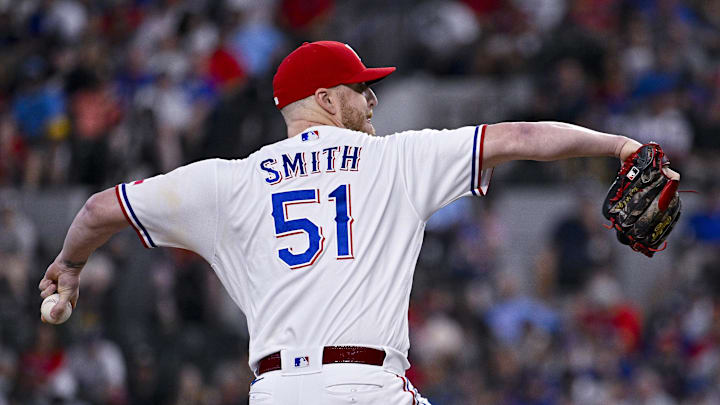Most valuable pitch: Slider
Without a doubt, Smith's slider has kept him a successful reliever in the league over the past few seasons. It was his worst pitch back in 2012, with a -2.03 runs above average per 100 pitches, but he has improved it tremendously since then. His slider was one of the league's best, according to Baseball Savant.
Smith's slider registered a 17-run value, tied for second among all MLB pitchers. The pitch only had a 3.9 run value per 100 pitches, ranking 12th in the league. The high quality maintained across Smith's 432 sliders thrown in 2023 is impressive.
His slider's average speed of 81.1 MPH is well below the league's average slider speed of 83.6 MPH. However, he more than makes up for that with above-average horizontal and vertical break. His 7.1 inches of horizontal movement is 1.4 inches higher than the league average, while his 41 inches of vertical movement is 3.3 inches better too. His late-breaking movement baffles opposing hitters. He allowed only a .120 batting average and .213 slugging with his slider.
While Smith does not start a plate appearance with his slider very often, it is a nail in the coffin once he has a lead. He throws that pitch the most after a 0-1 count, allowing only a. 506 OPS to opposing batters once he has the lead.
It is a repeatable pitch that made Smith a reliable reliever last season. Even when he had rough seasons, the slider was Smith's bread and butter. It is a far from perfect pitch, as his slider's active spin rate ranked 394th. It could be far more efficient, but plenty of other star pitchers have found success with similar sliders.
